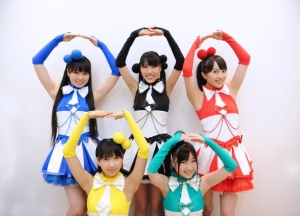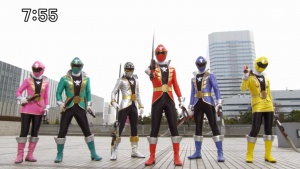Difference between revisions of "Language/Japanese/Vocabulary/Colors"
| Line 20: | Line 20: | ||
|カーラー Karaa | |カーラー Karaa | ||
|色(いろ) Iro | |色(いろ) Iro | ||
| | |<player>color_japanese_polyglotclub_wiki.mp3</player> | ||
| | | | ||
|- | |- | ||
| Line 26: | Line 26: | ||
|レッド Reddo | |レッド Reddo | ||
|赤(あか) Aka | |赤(あか) Aka | ||
| | |<player>red_japanese_polyglotclub_wiki.mp3</player> | ||
| scope="col" style="background:#ff0000;" | | | scope="col" style="background:#ff0000;" | | ||
|- | |- | ||
| Line 32: | Line 32: | ||
|ブルー Buruu | |ブルー Buruu | ||
|青(あお) Ao | |青(あお) Ao | ||
| | |<player>blue_japanese_polyglotclub_wiki.mp3</player> | ||
| scope="col" style="background:#0000ff;" | | | scope="col" style="background:#0000ff;" | | ||
|- | |- | ||
| Line 38: | Line 38: | ||
|グリーン Guriin | |グリーン Guriin | ||
|緑(みどり) Midori | |緑(みどり) Midori | ||
| | |<player>green_japanese_polyglotclub_wiki.mp3</player> | ||
| scope="col" style="background:#008000;" | | | scope="col" style="background:#008000;" | | ||
|- | |- | ||
| Line 44: | Line 44: | ||
|イエロー Ierou | |イエロー Ierou | ||
|黄色(きいろ) Kiiro | |黄色(きいろ) Kiiro | ||
| | |<player>yellow_japanese_polyglotclub_wiki.mp3</player> | ||
| scope="col" style="background:#ffff00;" | | | scope="col" style="background:#ffff00;" | | ||
|- | |- | ||
| Line 50: | Line 50: | ||
|ピンク Pinku | |ピンク Pinku | ||
|桃色(ももいろ) Momoiro | |桃色(ももいろ) Momoiro | ||
| | |<player>pink_japanese_polyglotclub_wiki.mp3</player> | ||
| scope="col" style="background:#ff1493;" | | | scope="col" style="background:#ff1493;" | | ||
|- | |- | ||
| Line 56: | Line 56: | ||
|ブラウン Buraun | |ブラウン Buraun | ||
|茶色(ちゃいろ) Chairo | |茶色(ちゃいろ) Chairo | ||
| | |<player>brown_japanese_polyglotclub_wiki.mp3</player> | ||
| scope="col" style="background:#a52a2a;" | | | scope="col" style="background:#a52a2a;" | | ||
|- | |- | ||
| Line 62: | Line 62: | ||
|パープル Paaparu | |パープル Paaparu | ||
|紫(むらさき) Murasaki | |紫(むらさき) Murasaki | ||
| | |<player>purple_japanese_polyglotclub_wiki.mp3</player> | ||
| scope="col" style="background:#800080;" | | | scope="col" style="background:#800080;" | | ||
|- | |- | ||
| Line 68: | Line 68: | ||
|ブラック Burakku | |ブラック Burakku | ||
|黒(くろ) Kuro | |黒(くろ) Kuro | ||
| | |<player>black_japanese_polyglotclub_wiki.mp3</player> | ||
| scope="col" style="background:#000000;" | | | scope="col" style="background:#000000;" | | ||
|- | |- | ||
| Line 74: | Line 74: | ||
|ワイト Waito | |ワイト Waito | ||
|白(しろ) Shiro | |白(しろ) Shiro | ||
| | |<player>white_japanese_polyglotclub_wiki.mp3</player> | ||
| scope="col" style="background:#fff;" | | | scope="col" style="background:#fff;" | | ||
|- | |- | ||
| Line 80: | Line 80: | ||
|シルバー Shirubaa | |シルバー Shirubaa | ||
|銀色(ぎんいろ) Gin'iro | |銀色(ぎんいろ) Gin'iro | ||
| | |<player>silver_japanese_polyglotclub_wiki.mp3</player> | ||
| scope="col" style="background:#c0c0c0;" | | | scope="col" style="background:#c0c0c0;" | | ||
|- | |- | ||
| Line 86: | Line 86: | ||
|ゴルドー Gorudou | |ゴルドー Gorudou | ||
|金色(きんいろ) Kin'iro | |金色(きんいろ) Kin'iro | ||
| | |<player>gold_japanese_polyglotclub_wiki.mp3</player> | ||
| scope="col" style="background:#ffd700;" | | | scope="col" style="background:#ffd700;" | | ||
|- | |- | ||
| Line 92: | Line 92: | ||
|オレンジ Orenji | |オレンジ Orenji | ||
|オレンジ Orenji | |オレンジ Orenji | ||
| | |<player>orange_japanese_polyglotclub_wiki.mp3</player> | ||
| scope="col" style="background:#ff8c00;" | | | scope="col" style="background:#ff8c00;" | | ||
|} | |} | ||
Revision as of 10:52, 8 October 2021
Hi Japanese learners 😀
In today's lesson, we will give you some tips for learning colors in Japanese.
As in many situations, Japanese people use Japanese or English words depending on the context. This rule also applies to colors.
| English | Japenglish | Japanese (nouns) | Audio | Appearance |
|---|---|---|---|---|
| Color | カーラー Karaa | 色(いろ) Iro |
|
|
| Red | レッド Reddo | 赤(あか) Aka |
|
|
| Blue | ブルー Buruu | 青(あお) Ao |
|
|
| Green | グリーン Guriin | 緑(みどり) Midori |
|
|
| Yellow | イエロー Ierou | 黄色(きいろ) Kiiro |
|
|
| Pink | ピンク Pinku | 桃色(ももいろ) Momoiro |
|
|
| Brown | ブラウン Buraun | 茶色(ちゃいろ) Chairo |
|
|
| Purple / Violet | パープル Paaparu | 紫(むらさき) Murasaki |
|
|
| Black | ブラック Burakku | 黒(くろ) Kuro |
|
|
| White | ワイト Waito | 白(しろ) Shiro |
|
|
| Silver | シルバー Shirubaa | 銀色(ぎんいろ) Gin'iro |
|
|
| Gold | ゴルドー Gorudou | 金色(きんいろ) Kin'iro |
|
|
| Orange | オレンジ Orenji | オレンジ Orenji |
|
Examples
- Sometimes you add "iro" to the name of the color = Momo ... iro // Cha... iro
Cha is tea and iro is color, so "chairo" means "color of tea".
Momo means peach (check the lesson about fruits). So "Momoiro" is "color of peach".
- Sometimes you add " i " letter to the name of the color : Aka...i // Kuro...i // Shiro...i
This last case mainly concerns the na-adjective (an article will come later about).
- "Omae ha mada aoi" = You are still green.
There is an expression in french saying "etre un bleu", meaning don't be experienced.
- "Shingouki ga ao dake no aida ha douro wo watarette ne" = You can cross the line / street only when traffic lights are blue.
- "Kyou ha aozora desu" = Today the sky is blue.
As you can see Ao ( i ) can sometimes means blue, sometimes green. But if you ask Japanese people how to say "blue" the answer will be "ao".
Baby supposed newborn is called "akachan", literally "little red". Refers to the color of the skin when a baby is born.
In the Japanese popular culture, there is an annual TV show for kids using a "color code" called "Sentai". Better known as "Power Rangers".
Illustrations
Here is a screenshot of the 2011 sentai show : Kaizoku Sentai Gokaiger = Gokaiger the Pirate Squadron.
2017 show name's Uchuu Sentai Kyuuranger, and refers to the number of members in the starter team. For the first time, there is 9 (kyuu) people. Usually only 3 or 5.
There is a famous idol group called Momoiro Clover Z, sometimes shorten as only Momoclo.
The name means Peach-colored clover. It interesting because they are usually clothed as a sentai team with a personal color.
About colors in Japanese color:
https://en.wikipedia.org/wiki/Traditional_colors_of_Japan

